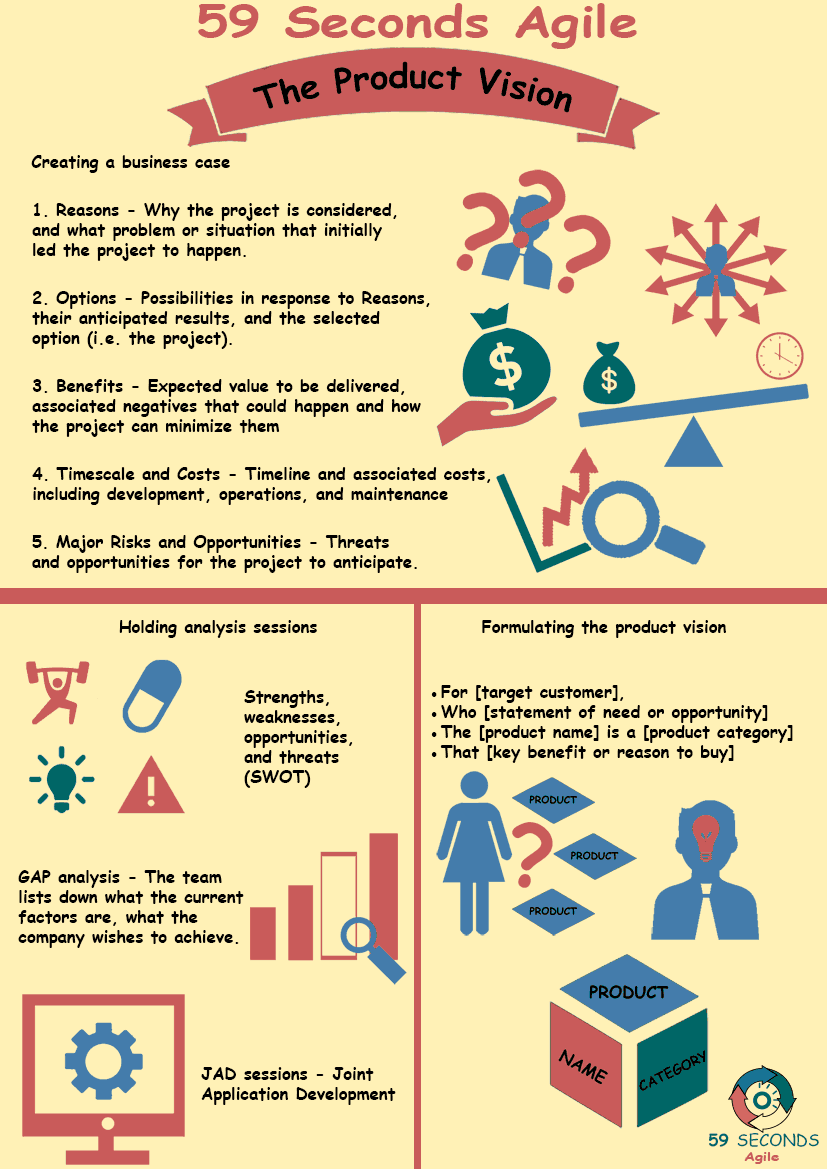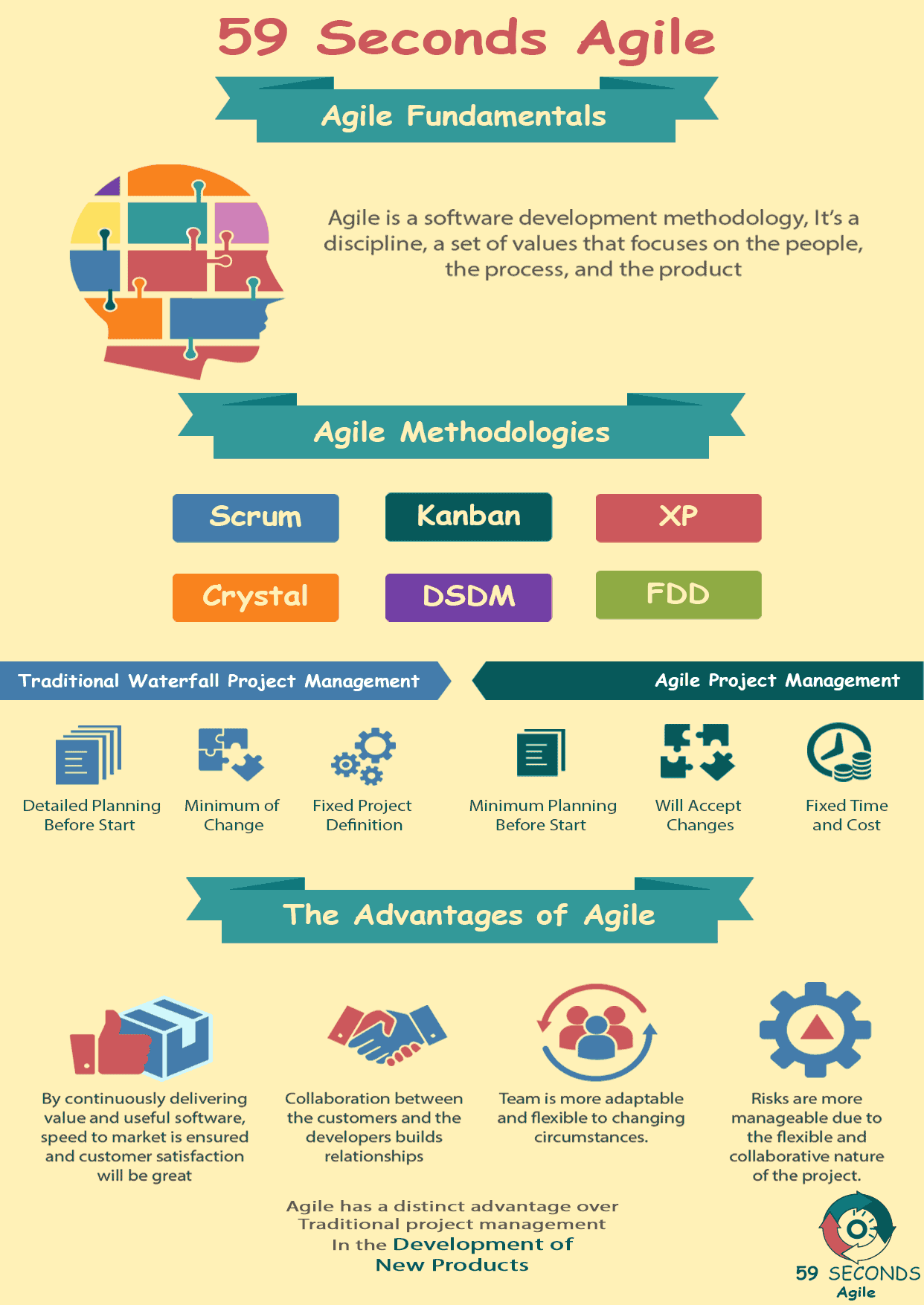This article looks to discuss the Agile Project Vision and using GAP Analysis to determine alignment between the Product and the Customer requirements.
The Agile Fundamentals
A 59 Seconds Agile Video Animation
GAP Analysis and the Agile Project Vision – Part 2
A 59 Seconds Agile Article
On the other hand, GAP analysis is done for the company’s internal needs. The team lists down what the current factors are, what the company wishes to achieve. The gap between the two states is addressed by listing ways to reach the goals. This is done to know what the current strengths are as well as possible flaws in allocation, planning, production, and other important aspects of the project.

GAP Analysis and JAD Analysis
Joint Application Development (JAD) sessions can further help the team in refining their ideas. JAD is a managed process used in the dynamic systems development method (DSDM). It gathers the client’s view on business requirements for information technology solutions, together with the development team. This is done through a series of collaborative workshop sessions. In the design sessions, scope and objectives identified during planning are reviewed, and data, system requirements, interfaces, and processes are identified.

GAP Analysis: Formulating the Product Vision
The results from analyzing and prototyping will prepare the product owner, the team, and the stakeholders for the product vision workshop. This is a collaborative session that focuses on formulating the product vision while formulating some of the features to be included in the product backlog.
GAP Analysis: Coming up with the Product Vision
When the coming up with the product vision, it must ultimately answer the following questions:
1. Who are the target customers and users? Are the two different?
2. What problems will the product solve?
3. What attributes of the product will satisfy the customer needs?
4. Who are the internal and external competitors, and how do they perform?
5. What are the timeframe and budget for the project?
Our Favourite Agile Books
We found these books great for finding out more information on Agile Scrum:
GAP Analysis: Product Vision Template
This Product Vision template briefly captures the answers to the questions above in this simple statement:
- For [target customer],
- Who [statement of need or opportunity]
- The [product name] is a [product category]
- That [key benefit or reason to buy]
- Unlike [primary competitive alternative]
- Our product [statement of primary differentiation]
The purpose of the product vision is to be the overarching theme of the entire product backlog that gives an understanding of what value the product will deliver as a whole. By doing research, analysis, and validation of ideas, your product vision will give the team a clear direction as to what you are building together.
Prev <— Continue Reading —> Next
User Stories Applied
A 59 Seconds Agile Book Review
User Stories Applied by Mike Cohn is one of our favourite books on Agile User Stories. The book starts with an overview into user stories, and details what a user story is and the different aspects of them. He then discusses how to go about writing a user story, and provides details of the INVEST criteria that can be used to determine if the story is meeting all of its objectives. Next Mike gives an in depth discussion of who user stories are written for and where to begin when gathering the details for them. The book then discusses acceptance testing user stories, including how to go about specifying these criteria and the responsibilities of the development team and customers during this process.
Prev <— Continue Reading —> Next
Learn More
Agile Project Management Training Courses
Agile Fundamentals
A 59 Seconds Agile Infographic


